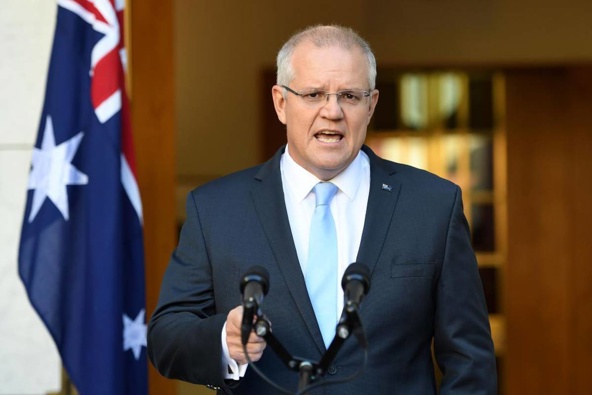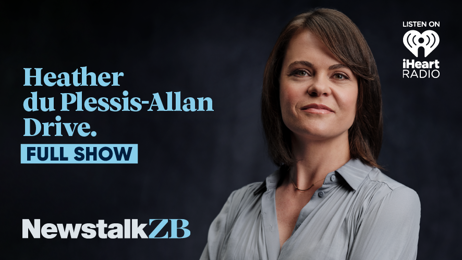Follow
the podcast on

Australia’s unemployment figure has shocked pundits by unexpectedly falling to 6.8 per cent as the economy roars back to life in the states that have managed to reopen the economy.
Border closures and the coronavirus lockdown on Victoria have had a huge impact on the unemployment rate with some states that have reopened recording a surprise jobs boom.
According to the Australian Bureau of Statistics, total jobs increased by a surprising 111,000 jobs in August, a figure propped up by the creation of over 70,000 part-time jobs.
The topsy turvy results were much better than expected in some states.
While employment fell overall by 413,000 job since March, unemployment has only increased by 200,000.
That underlines the Prime Minister’s concerns that the “real” unemployment rate is much higher because thousands have simply given up looking for work.
The national unemployment rate fell from 7.5 per cent to 6.8 per cent in August in a result few economists saw coming.
But in Victoria, where millions of Melburnians remained confined to their homes and banned from attending work, unemployment rose to 7.1 per cent up from 6.8 per cent during the previous month.
Treasurer Josh Frydenberg said the NSW economy, where borders remained open, was the stand out performer.
“What we do know is that closed borders cost jobs,’’ Mr Frydenberg said.
“We recognise that despite this fall today, in Australia’s official unemployment rate, many Australians are doing it tough. And the road to recovery will be long, it will be hard, and it will be bumpy.
“But we have seen over the last three months 458,000 new jobs being created. Those 458,000 new jobs, 60 per cent of those jobs have gone to women and 40 per cent have gone to young people.”
Mr Frydenberg said the effective unemployment rate, which takes into account not just those who are unemployed officially, but those who have left the labour force or seen their hours reduced to zero, has fallen from 9.8 per cent to 9.3 per cent.
It was a different story in Western Australia which closed its borders and controlled COVID-19 early, with unemployment falling from 8.3 per cent to 7 per cent with 32,200 jobs created.
WA Treasurer Ben Wyatt described the figures as “strong” but said there was “always more to do.”
Unemployment also fell in Queensland, which like WA has closed its borders to states still experiencing COVID-19 infections.
Queensland’s jobless rare fell from 8.8 per cent to 7.5 per cent.
The jobless rate fell in the Northern Territory from 7.5 per cent to just 4.2 per cent.
Today’s figures also challenge assumptions that women are hardest hit by COVID-19 lay offs with more women returning to the workforce after losing jobs in retail and hospitality as a result of shutdowns.
The new payroll figures suggest men are now just as likely to be out of work and are possibly taking longer to find work again after losing their jobs.
The surprise result comes amid warnings that Australia’s COVID-19 recession could last for four years, with economists predicting the jobs market may not return to normal until 2023.
Overnight, the OECD released new economic forecasts predicting the Australian economy will not get back to its pre-coronavirus level until 2022 with the Victorian coronavirus lockdown extending the recession.
ANZ economists have predicted it could take even longer to return to normal.
“We have downgraded our labour market forecasts, and now don’t expect employment to recover to pre-pandemic levels until 2023,’’ ANZ senior economist Catherine Birch said.
“The labour market outlook is very worrying. Without more fiscal stimulus, unemployment would rise to – and possibly remain at – an unacceptably high level, with damaging long-term consequences.”
The OECD warned that “localised lockdowns, border closures and new restrictions being imposed in some countries to tackle renewed virus outbreaks are likely to have contributed to the recent moderation of the recovery in some countries, such as Australia.”
“Put simply closed borders cost jobs and put the economy in a weaker position to recover,’’ Treasurer Josh Frydenberg said.
“The Morrison Government will continue to do what is necessary to cushion the blow and help all Australians get to the other side of the crisis.”
Labor’s treasury spokesman Jim Chalmers said the grim outlook underlined the risk of slashing payments for the unemployed and the wage subsidy JobKeeper.
“During the deepest recession in almost a century and an escalating jobs crisis, it makes no sense for the Morrison Government to be withdrawing support without a comprehensive jobs plan to replace it,’’ he said.
“The OECD joins the RBA and prominent economists’ calls for more support, not less. Instead of a jobs plan, Scott Morrison and Josh Frydenberg want to wind back JobKeeper, cut super, cut wages, freeze the pension, point the finger and shift the blame.
“This recession will be deeper and unemployment queues will be longer because the Morrison Government is leaving too many people behind in this first recession in three decades.”
A new analysis released today by the McKell Institute underlines the concerns.
It warns that the Morrison Government will rip $1.52 billion out of the economy every fortnight as a result of the reduced JobKeeper per fortnight payments.
By Christmas, this represents a $9.9 billion reduction in fiscal support than would have occurred if the Commonwealth maintained JobKeeper at its original rate.
An estimated one million part time workers will have their JobKeeper pay reduced from $1500 per fortnight to $750 per fortnight, while approximately 2,430,000 full-time workers will see their JobKeeper pay reduced to $1200.
Take your Radio, Podcasts and Music with you









